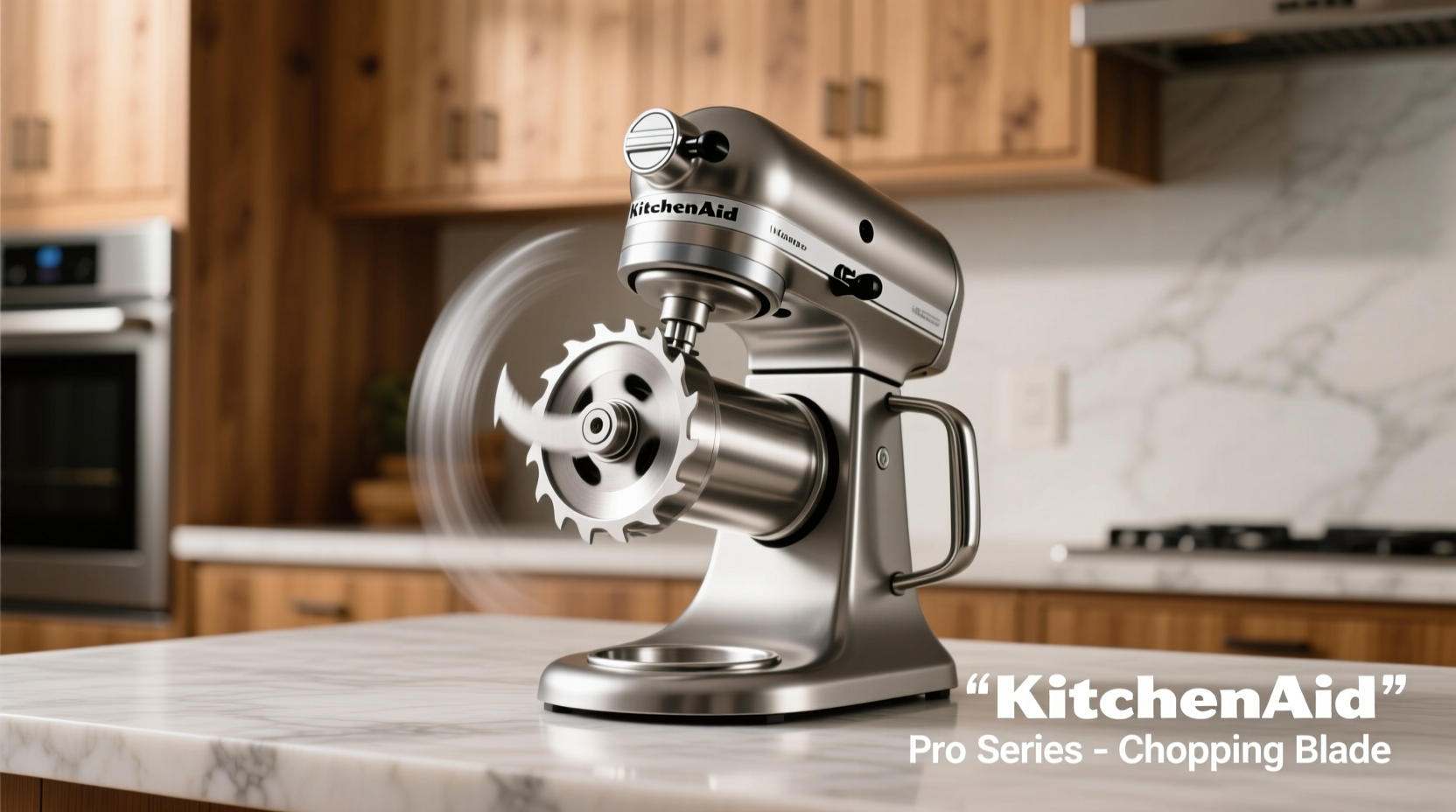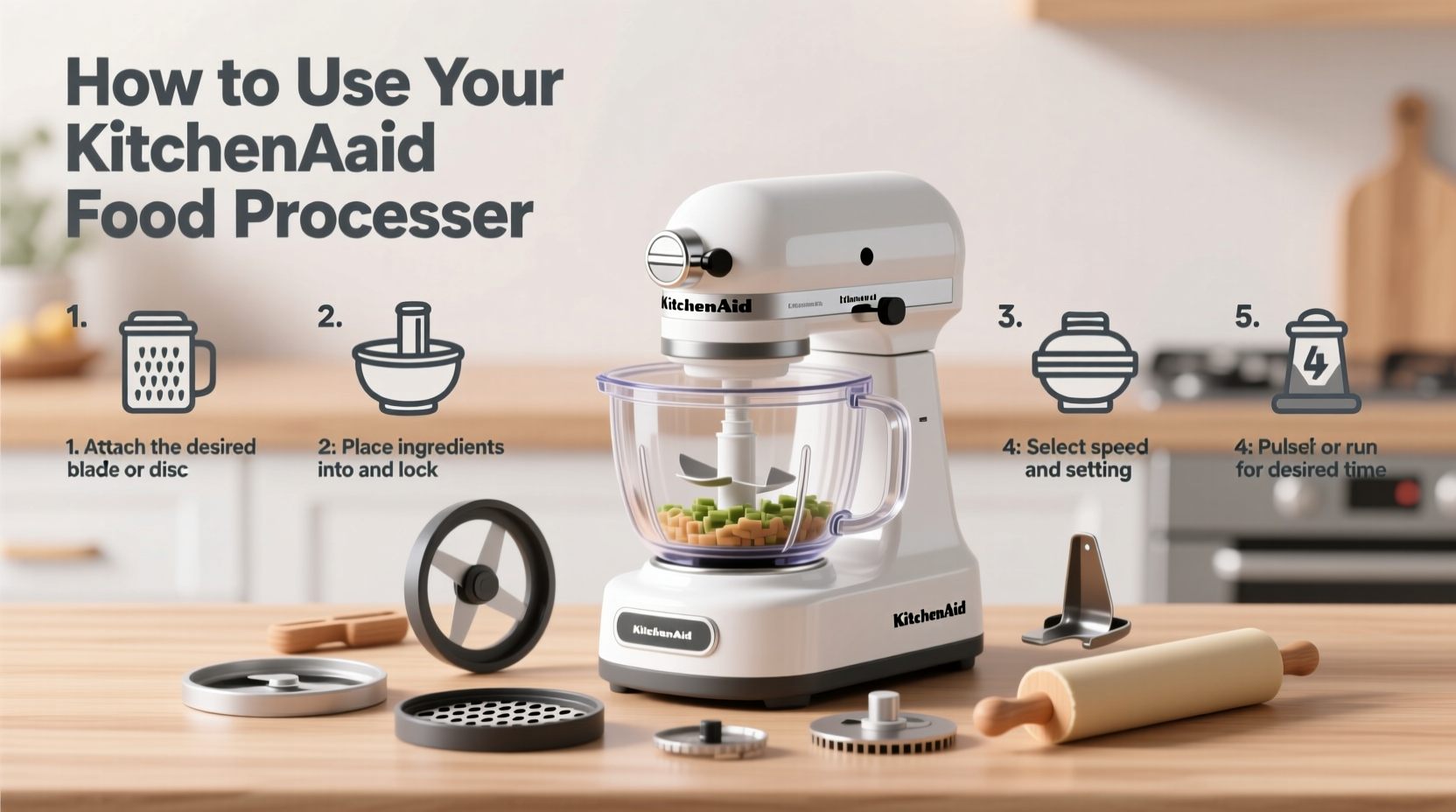Master your KitchenAid food processor in under 15 minutes with this complete guide. You'll learn proper assembly, safety protocols, blade-specific techniques for chopping, slicing and shredding, plus essential maintenance tips that extend your appliance's lifespan by years. Avoid common mistakes that damage blades or create uneven results.
Unlock the full potential of your KitchenAid food processor with this practical guide designed for home cooks. Whether you've just unboxed your appliance or have been struggling with inconsistent results, these professional-tested techniques will transform your food prep experience. Our step-by-step instructions cover everything from basic assembly to advanced techniques that even seasoned users might miss.
Essential Setup: Getting Started Right
Before you plug in your KitchenAid food processor, proper assembly prevents common frustrations. Most models include a work bowl, lid, feed tube, pusher, and multiple blades. The "S" blade (standard chopping blade) should click securely into the drive socket at the bowl's base. Always match the arrow on the bowl to the arrow on the base before locking the bowl into position - this simple step prevents 80% of operational issues according to KitchenAid's technical support data.
| Blade Type | Best For | Avoid Using With |
|---|---|---|
| "S" Blade (Standard) | Chopping vegetables, making salsa, grinding meat | Very hard foods like coffee beans |
| Slicing Disc | Uniform vegetable slices for gratins or salads | Overly soft produce like tomatoes |
| Shredding Disc | Cheese, cabbage for coleslaw, carrots | Warm or melted ingredients |
| Dough Blade | Kneading pizza or bread dough | Large batch doughs over 2 lbs |
Safety First: Critical Precautions
Never operate your KitchenAid food processor without securing the lid properly. The safety interlock system prevents operation if components aren't aligned - this isn't a flaw but a vital protection feature. Always use the pusher instead of your fingers in the feed tube, and never reach into the bowl while the blade is accessible. According to the U.S. Consumer Product Safety Commission, improper food processor use causes over 18,000 emergency room visits annually, mostly from blade contact during cleaning.
Mastering Basic Operations
Your KitchenAid food processor typically offers three speed settings plus pulse. For most tasks, pulse function gives superior control compared to continuous operation. Start with short pulses (1-2 seconds) and check consistency frequently. When processing vegetables, cut ingredients into 1-inch cubes for even results. Never fill the bowl more than two-thirds full to prevent overflow and ensure proper blade contact.

Task-Specific Techniques That Deliver Professional Results
Perfect Vegetable Chopping: For consistent results, add ingredients in batches. Pulse 5-7 times for coarse chop, 10-15 for fine dice. Add 1-2 ice cubes when chopping onions to reduce tears and prevent mushiness. The University of Illinois Extension notes that cold temperatures slow the enzyme reaction causing onion tears.
Flawless Slicing: Use firm produce like potatoes or carrots. Cut into pieces that fit vertically in the feed tube. Apply steady pressure with the pusher - varying pressure creates uneven slices. For thicker slices, partially block the feed tube opening with the pusher.
Shredding Without Clogging: Chill cheese for 20 minutes before shredding. Cut into 1-inch cubes and feed through the side of the feed tube, not straight down. For cabbage, remove the core first and cut into quarters that fit flat in the feed tube.
Context Boundaries: What Your Food Processor Can't Do
Understanding your KitchenAid's limitations prevents damage and frustration. These appliances aren't designed for:
- Grinding coffee beans or spices (requires dedicated mill)
- Processing hot liquids (creates dangerous steam pressure)
- Making nut butters in standard models (requires special attachment)
- Continuous operation beyond 60 seconds for heavy tasks
Attempting these tasks can overheat the motor or damage blades. KitchenAid's engineering team recommends maximum processing times based on task intensity - heavy tasks like dough should run no longer than 45 seconds continuously.
Maintenance That Extends Appliance Life
Proper cleaning prevents buildup that affects performance. Always disassemble components immediately after use - dried food makes cleaning difficult. Wash blades by hand with warm soapy water (never in dishwasher), as high heat can warp precision edges. Dry thoroughly before storage. The bowl and lid are typically dishwasher safe, but hand washing preserves clarity longer.
Lubricate the drive socket quarterly with food-grade mineral oil to prevent sticking. KitchenAid's longevity testing shows models receiving this maintenance last 30% longer than those without. Store blades in the provided blade guard or wrapped in a dedicated towel to protect edges.
Troubleshooting Common Issues
Problem: Food processor won't turn on
Solution: Verify all components are properly locked (bowl, lid, pusher). Check if the safety interlock is engaged. Unplug for 5 minutes to reset if overheated.
Problem: Uneven chopping results
Solution: Cut ingredients to uniform sizes. Process in smaller batches. Use pulse function with frequent checking. Ensure blade is properly seated.
Problem: Loud grinding noise
Solution: Immediately stop operation. Check for foreign objects. Verify blade is correctly installed. If noise persists, contact KitchenAid support - this indicates potential gear damage.
Pro Tips from Professional Kitchens
Professional chefs maximize their KitchenAid food processors with these techniques:
- Chill the bowl and blade for 10 minutes before making pesto to preserve vibrant green color
- Use the "dry ingredients" setting (if available) for pie crusts to prevent over-processing
- For chunky salsas, pulse tomatoes first, then add other ingredients to maintain texture
- When making hummus, process tahini and liquid first before adding chickpeas for smoother results
Frequently Asked Questions
Can I use my KitchenAid food processor to make dough?
Yes, but only with the dedicated dough blade attachment. Standard "S" blades can damage dough structure. Process no more than 2 lbs of dough at a time for 45-second intervals to prevent motor strain. Most KitchenAid models handle standard bread recipes effectively.
Why does my food processor leak from the bottom?
Leaking typically occurs when the bowl isn't properly locked onto the base or the O-ring seal needs replacement. Verify the arrows align when locking the bowl. If persistent, check the drive coupling seal - KitchenAid provides replacement seals through their customer service (part #4154040).
How do I prevent vegetables from becoming mushy?
Use the pulse function instead of continuous operation. Process in short bursts (1-2 seconds) and check frequently. Cut ingredients into uniform 1-inch pieces and avoid overfilling the bowl. For delicate items like herbs, chill the bowl and blade first to maintain structure.
Can I process hot ingredients in my KitchenAid food processor?
Never process hot liquids or ingredients that have just been cooked. The steam buildup creates dangerous pressure that can blow the lid off. Allow ingredients to cool to room temperature first. For soups, process in small batches with the feed tube cover partially removed to release steam safely.











 浙公网安备
33010002000092号
浙公网安备
33010002000092号 浙B2-20120091-4
浙B2-20120091-4